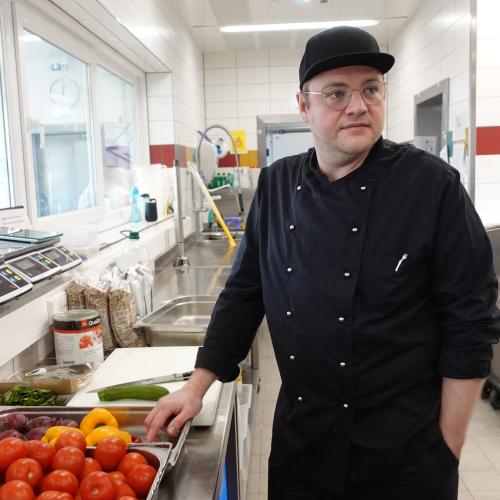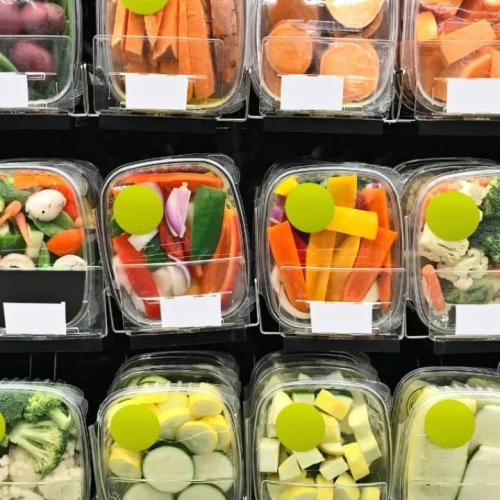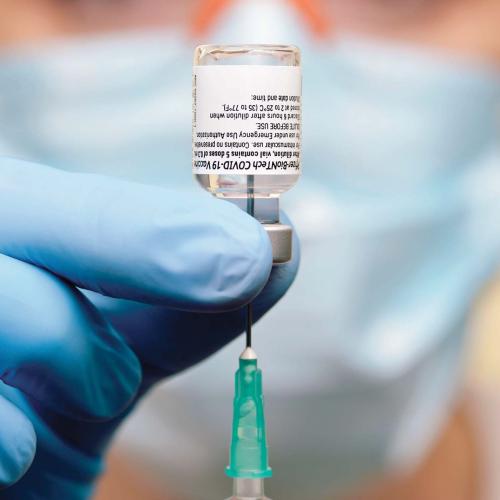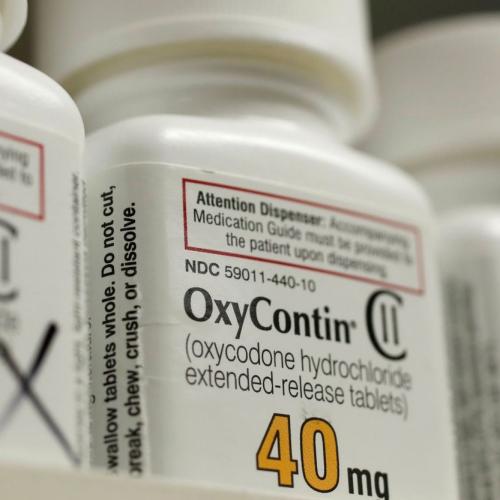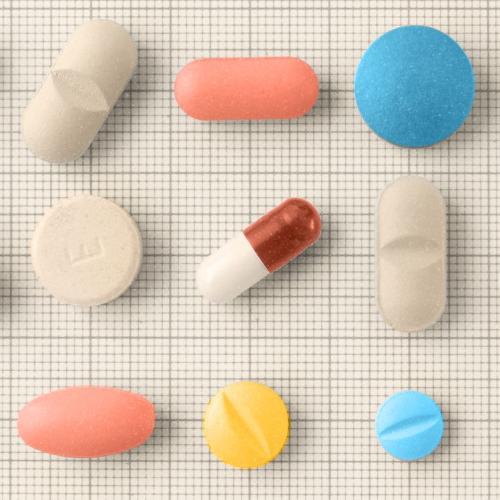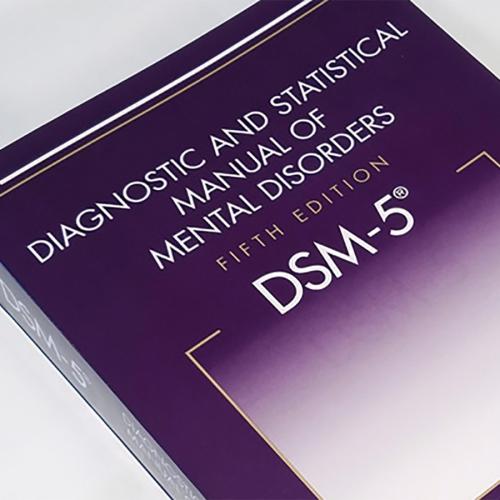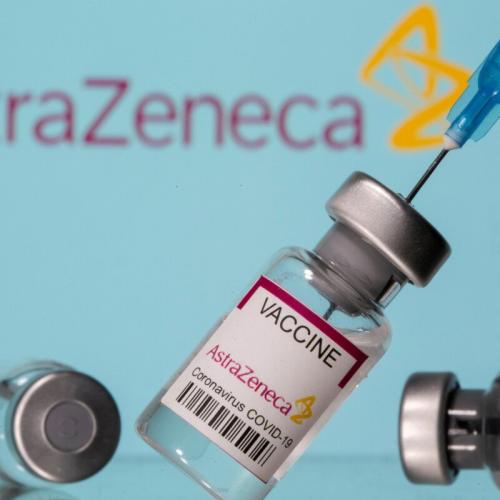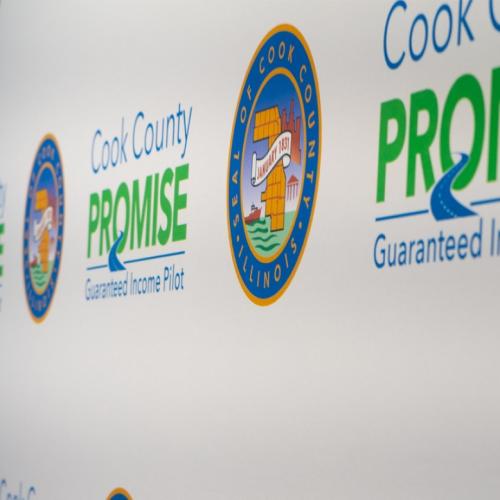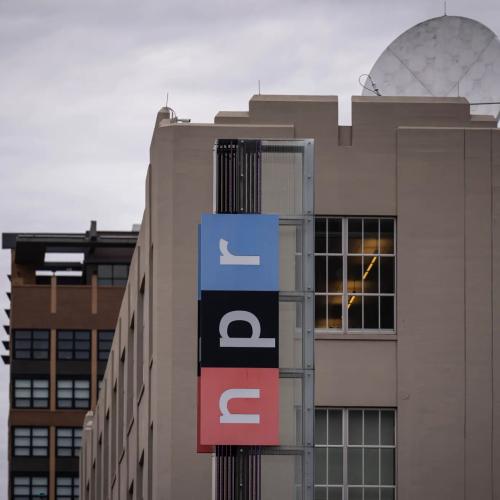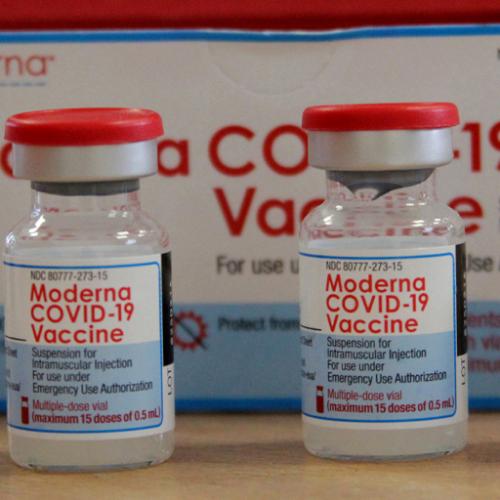Food Corruption News Articles
Below are key excerpts of revealing news articles on food system corruption from reliable news media sources. If any link fails to function, a paywall blocks full access, or the article is no longer available, try these digital tools.
For further exploration, delve into our comprehensive Health and Food Corruption Information Center.
In December 2010 under the Obama administration, Congress enacted the Healthy, Hunger-Free Kids Act. This legislation provided for more fruits and vegetables in school meal programs, a focus on whole grains and a lot fewer starchy vegetables and trans-fat laden foods. In response, some food companies rejiggered ingredients just enough to add “whole grain” to their packaging. Things went downhill from there. Congress caved to lobbying in 2014, allowing schools to serve high-salt french fries and pizza sold by these companies. Again, big food lobbied hard and legislators pulled back on restrictions for sodium levels, flavored milks and amounts of refined grains. We in the United States seem to believe that ... education is unconnected to food and how we eat. Instead, our kids are at the mercy of the companies and brands inundating them: Tyson, General Mills, Kraft, Heinz and many others. Before the pandemic began, the overwhelming majority of US schools offered branded foods during or around mealtimes, and that this is worth $20bn in ... profits for the food industry. Pantries and food banks get in bed with corporate food companies because they don’t want to lose access to large quantities of foods and beverages that fill people up. That these products are unhealthy is a secondary or tertiary concern. Food banks and pantries are not always meeting the nutritional profiles of the people they serve, particularly people who are struggling with diabetes, obesity and decades of poor eating.
Note: For more along these lines, see concise summaries of deeply revealing news articles on food system corruption from reliable major media sources.
After a decline in nutrition education in U.S. schools in recent decades, there's new momentum to weave food and cooking into the curriculum again. Remember the hands-on cooking in home economics class, which was a staple in U.S. schools for decades? "I'd love to see it brought back and have the science around healthy eating integrated," says Stacy Dean, deputy under secretary for food, nutrition and consumer services at the U.S. Department of Agriculture. Dean told me she was inspired by a visit to Watkins Elementary, in Washington, D.C., where this idea is germinating. Students grow vegetables in their school garden. They also roll up their sleeves in the school's kitchen to participate in a FRESHFARM FoodPrints class, which integrates cooking and nutrition education. Evaluations show participation in FRESHFARM programs is associated with increased preference for fruits and vegetables. And, the CDC points to evidence that nutrition education may help students maintain a healthy weight and can also help students recognize the connection between food and emotional wellbeing. Given the key role diet plays in preventing chronic disease, the agency says it would be ideal to offer more nutrition education. Programs like FRESHFARM can help kids expand their palettes by introducing them to new tastes. At first, many kids are turned off by the bitter taste of greens. But through the alchemy of cooking, caramelizing the onions, and blending in fresh ginger, kids can be inspired.
Note: Explore more positive stories like this in our comprehensive inspiring news articles archive focused on solutions and bridging divides.
President Joe Biden announced that his administration planned to scrutinize a Trump-era decision to allow the continued use of chlorpyrifos, a pesticide that can damage children's brains. The Environmental Protection Agency went on to ban the use of the chemical on food. Yet when officials from around the world gathered in Rome last fall to consider whether to move forward with a proposed global ban on the pesticide, chlorpyrifos had a surprising defender: a senior official from the EPA. Karissa Kovner, a senior EPA policy adviser, is a key leader of the U.S. delegation at a United Nations body known as the Stockholm Convention, which governs some of the worst chemicals on the planet. Kovner made it clear that the U.S. was not ready to support taking the next step through the convention to provide similar protections for the rest of the world. The U.S. is known for throwing a wrench into the international convention's efforts to restrict pollutants. "They're usually seen as a country that raises objections to the regulation of chemicals," said [attorney] David Azoulay. Chlorpyrifos is so harmful that the American government not only banned its use on food but also barred the import of fruits and vegetables grown with it. Persistent organic pollutants ... lodge in fat cells, allowing them to spread from contaminated animals to anything that eats them. Humans sit at the top of this polluted food pyramid, and we can pass the chemicals to our babies through the umbilical cord before birth and through breast milk afterward.
Note: Did you know that chlorpyrifos was originally developed by Nazis during World War II for use as a nerve gas? Read more about the history and politics of chlorpyrifos, and how U.S. regulators relied on falsified data to allow its use for years. For more along these lines, see concise summaries of deeply revealing news articles on corruption in government and in the food system from reliable major media sources.
Recycled and reused food contact plastics are "vectors for spreading chemicals of concern" because they accumulate and release hundreds of dangerous toxins like styrene, benzene, bisphenol, heavy metals, formaldehyde and phthalates, new research finds. The study assessed hundreds of scientific publications on plastic and recycled plastic to provide a first-of-its-kind systematic review of food contact chemicals in food packaging, utensils, plates and other items and what is known about how the substances contaminate food. "Hazardous chemicals can accumulate in recycled material and then migrate into foodstuffs, leading to chronic human exposure," the study's authors wrote, noting bottles made from polyethylene terephthalate (PET) plastic as a common example. The study ... identified 853 chemicals used in PET recycled plastic and many of those have been discovered during the last two years. The most commonly detected were antimony and acetaldehyde, while potent toxins like 2,4-DTBP, ethylene glycol, lead, terephthalic acid, bisphenol and cyclic PET oligomers were also most frequently found. The review also highlighted widespread "illicit" recycling in which industry uses non-food grade plastic made with flame retardants and other toxic compounds in recycled food packaging. Despite strict regulations on which types of plastic can be used for food contact, studies identified [contaminated materials from] recycled electronics in the US, South Korea and European markets.
Note: For more along these lines, see concise summaries of deeply revealing news articles on food system corruption and health from reliable major media sources.
The US Environmental Protection Agency has in effect ignored a 2020 federal court order prohibiting the use of Monsanto and other producers' toxic dicamba-based herbicides that are destroying millions of acres of cropland, harming endangered species and increasing cancer risks for farmers, new fillings in the lawsuit charge. Instead of permanently yanking the products from the market after the 2020 order, the EPA only required industry to add further application instructions to the herbicides' labels before reapproving the products. A late 2021 EPA investigation found the same problems persist even with new directions added to the label, but the agency still allows Monsanto, BASF and other producers to continue using dicamba. The EPA's pesticide office is included in allegations that career managers are influenced by or have colluded with industry, and in some cases falsified science to make dangerous substances appear less toxic. About one-third of the pesticide office's funding comes from industry fees. The agency in 2016 approved the dicamba-based herbicide developed by Monsanto, which was to be used on genetically modified soybean and cotton crops. The herbicide can damage or kill neighboring crops and plants that are not engineered to be dicamba-resistant. The results are "devastating" and destroying millions of acres as "as never before seen in the history of US agriculture", the plaintiffs said. In some cases, direct dicamba exposure can kill insects, mammals and other animals.
Note: For more along these lines, see concise summaries of deeply revealing news articles on corruption in government and in the food system from reliable major media sources.
Researchers have discovered bottled water sold in stores can contain 10 to 100 times more bits of plastic than previously estimated — nanoparticles so infinitesimally tiny they cannot be seen under a microscope. At 1,000th the average width of a human hair, nanoplastics are so teeny they can migrate through the tissues of the digestive tract or lungs into the bloodstream, distributing potentially harmful synthetic chemicals throughout the body and into cells. One liter of water — the equivalent of two standard-size bottled waters — contained an average of 240,000 plastic particles from seven types of plastics, of which 90% were identified as nanoplastics and the rest were microplastics. Microplastics are polymer fragments that can range from less than 0.2 inch (5 millimeters) down to 1/25,000th of an inch (1 micrometer). Anything smaller is a nanoplastic that must be measured in billionths of a meter. The new finding reinforces long-held expert advice to drink tap water from glass or stainless steel containers to reduce exposure. In the new study, published ... in the journal Proceedings of the National Academy of Sciences, researchers from Columbia University presented a new technology that can see, count and analyze the chemical structure of nanoparticles in bottled water. Nanoplastics ... can invade individual cells and tissues in major organs, potentially interrupting cellular processes and depositing endocrine-disrupting chemicals.
Note: For more along these lines, see concise summaries of deeply revealing news articles on health from reliable major media sources.
More than half of the world’s population will be overweight or obese by 2035 unless governments take decisive action to curb the growing epidemic of excess weight, a report has warned. About 2.6 billion people globally – 38% of the world population – are already overweight or obese. But on current trends that is expected to rise to more than 4 billion people (51%) in 12 years’ time, according to research by the World Obesity Federation. Obesity among children and young people is on course to increase faster than among adults. By 2035 it is expected to be at least double the rate seen in 2020, according to the federation’s latest annual World Obesity Atlas report. It is expected to rise by 100% among boys under 18, leaving 208 million affected, but go up even more sharply – by 125% – among girls the same age, which would see 175 million of them affected. The federation is an alliance of health, scientific, research and campaign groups, and works closely on obesity with various global agencies. It wants governments to use tax systems; restrictions on the marketing of foods that are high in fat, salt or sugar; front-of-pack labels; and provision of healthy food in schools to address rising obesity. The federation’s report also highlights that many of the world’s poorest countries are facing the sharpest increases in obesity yet are the least well prepared to confront the disease. Nine of the 10 countries set to experience the biggest rises in coming years are low- or middle-income nations in Africa and Asia.
Note: Nutritional policy in the US is heavily influenced by processed foods manufacturers. For more along these lines, see concise summaries of deeply revealing news articles on health from reliable major media sources. Then explore the excellent, reliable resources provided in our Health Information Center.
Regenerative agriculture is an approach to farming that prioritises soil and environmental health by minimising synthetic inputs. [Farm manager Tim Parton] switched to using biologically active inputs after experiencing headaches and skin rashes from using pesticides. After sheep dipping, which involves immersing sheep in insecticide and pesticide mixtures to eliminate parasites, lumps would often show up on his arms. "I would be a mess, but if I went to the doctors, they would say 'you've just had a reaction' and would not take it seriously," he says. Since adopting a biological farming method, Parton has not experienced any negative health impacts. He has not had to use any phosphorus and potassium fertilisers on his crops for over 10 years. He says he has observed a big increase in insect and bird species since he stopped using pesticides. Pesticides may be responsible for the loss of smell in honeybees and salmon. Despite global regulations on pesticide use, one study estimates that about 385 million cases of unintentional, acute pesticide poisoning occur among farm workers each year. A 2020 study found that of the estimated 860 million agricultural workers worldwide, 44% are affected by pesticide poisoning annually. Acute health impacts can range from seizures to respiratory depression. Pesticide exposure has been associated with conditions such as attention deficit hyperactivity disorder (ADHD) and Parkinson's disease. Pesticide exposure has also been linked to sensory deterioration.
Note: For more along these lines, see concise summaries of deeply revealing news articles on food system corruption and health from reliable major media sources.
As people across the globe grappled with higher levels of stress, depression and anxiety this past year, many turned to their favorite comfort foods. But ... the sugar-laden and high-fat foods we often crave when we are stressed or depressed, as comforting as they may seem, are the least likely to benefit our mental health. Instead, whole foods such as vegetables, fruit, fish, eggs, nuts and seeds, beans and legumes and fermented foods like yogurt may be a better bet. Historically, nutrition research has focused largely on how the foods we eat affect our physical health, rather than our mental health. But ... a growing body of research has provided intriguing hints about the ways in which foods may affect our moods. A healthy diet promotes a healthy gut, which communicates with the brain through what is known as the gut-brain axis. Microbes in the gut produce neurotransmitters like serotonin and dopamine, which regulate our mood and emotions, and the gut microbiome has been implicated in mental health outcomes. “The gut microbiome plays a shaping role in a variety of psychiatric disorders, including major depressive disorder,” a team of scientists wrote in the Harvard Review of Psychiatry. “Mental health is complex,” said Dr. Jacka ... at Deakin University in Australia. “Eating a salad is not going to cure depression. But there’s a lot you can do to lift your mood and improve your mental health, and it can be as simple as increasing your intake of plants and healthy foods.”
Note: Explore a treasure trove of concise summaries of incredibly inspiring news articles which will inspire you to make a difference.
A congressional report found many of the products made by the country’s largest commercial baby food manufacturers contain significant levels of toxic heavy metals, including arsenic, lead, cadmium and mercury, which can endanger infant neurological development. The report ... from the House Oversight Committee’s subcommittee on economic and consumer policy found heavy metals in rice cereals, sweet potato puree, juices and sweet snack puffs made by some of the most trusted names in baby food. Gerber, Beech-Nut, HappyBABY (made by Nurture) and Earth’s Best Organic baby foods (made by Hain Celestial Group) complied with the committee’s request to submit internal testing documents. Campbell Soup, which sells Plum Organics baby foods, Walmart (its private brand is Parent’s Choice) and Sprout Foods declined to cooperate. Although there are no maximum arsenic levels established for baby food ... the FDA has set the maximum allowable levels in bottled water at 10 ppb of inorganic arsenic. Hain ... used many ingredients in its baby foods with as much as 309 ppb of arsenic. Lead levels in baby foods should not exceed 1 ppb. Beech-Nut used ingredients containing as much as 886.9 parts per billion of lead. In addition, Gerber used carrots containing as much as 87 ppb of cadmium and Nurture sold baby foods with as much as 10 ppb of mercury. And even when baby foods tested over companies’ internal limits for these heavy metals, they were sold anyway.
Note: For more along these lines, see concise summaries of deeply revealing news articles on food system corruption from reliable major media sources.
Bayer will pay more than $10 billion to resolve thousands of lawsuits regarding claims that its Roundup herbicide causes cancer, the company announced. Monsanto, bought by Bayer in 2018, lost a lawsuit that same year brought by a school groundskeeper who claimed its weedkiller had caused his non-Hodgkin's lymphoma. Since then, thousands of U.S. lawsuits have been filed against the company. The settlement, however, does not contain an admission of wrongdoing or liability. Bayer will pay $8.8 billion to $9.6 billion to settle existing lawsuits and then another $1.25 billion that will cover any potential litigation in the future. Lawsuits allege that Monsanto ignored warnings that its herbicide contained potentially cancer causing chemicals, then concealed the threat to consumers. A jury awarded California groundskeeper Dewayne Johnson nearly $290 million in damages in August 2018 after they found Monsanto failed to warn Johnson and other consumers about the risks posed by its weed-killing products. A judge upheld the decision upon appeal, but lowered the damages to $78 million due to what she considered an overreach in punitive damages decided by the jury. And last year, a California jury awarded a husband and wife more than $2 billion in damages in a suit that claimed Roundup caused their illness. German pharmaceuticals and chemical giant Bayer bought Monsanto in 2018 just months before Johnson won his suit against the company. Bayer eliminated the Monsanto name, but maintained the brands.
Note: The negative health impacts of Roundup are well known. Yet the EPA continues to use industry studies to declare Roundup safe while ignoring independent scientists. For more along these lines, see concise summaries of deeply revealing news articles on health from reliable major media sources.
The global obesity epidemic continues, and a new report shows that about two billion people worldwide are overweight or obese. Thats about 30% of the worlds population. The new study, published in the New England Journal of Medicine, found that about a third of the global populationincluding adults and childrenexceed a healthy weight. About 10% of people in the world are obese, according to the findings. Studies have linked overweight and obesity to a higher risk for health complications like type 2 diabetes, heart disease, depression, respiratory problems, major cancers and more. The study authors looked at data from people in 195 countries and territories from 1980 through 2015. They found that in 2015, there were 107 million children and 603 million adults with obesity. Having a high body mass index accounted for 4 million deaths in 2015, and more than two thirds of these deaths were from heart disease. Since 1980, obesity rates in 70 countries have doubled, the study found, and the rate of childhood obesity has increased faster in many countries than the adult obesity rate. Several factors have contributed to the growing obesity epidemic, including greater access to fast food, larger portion sizes and ubiquitous processed food. Emerging science also suggests that chemicals from food and household products may have an effect.
Note: For more along these lines, see concise summaries of deeply revealing health news articles from reliable major media sources. Then explore the excellent, reliable resources provided in our Health Information Center.
Karen McCormack, a retired Environmental Protection Agency (EPA) scientist who spent 40 years with the agency, told Al Jazeera’s investigative show Fault Lines that she believed the EPA was not fulfilling its mission to protect the public from harmful chemicals. “In the last three decades that I have worked at EPA it has been very rare for a toxic pesticide to be taken off the market,” she told Fault Lines. “Just about every, every new pesticide application that is submitted to the agency is approved, no matter how high the risk.” As the Al Jazeera report notes, paraquat is banned in 58 countries but its use is on the rise in the United States. The Guardian’s Paraquat Papers, published in 2022 in collaboration with the New Lede, exposed years of corporate efforts to cover up paraquat’s links to Parkinson’s disease, mislead the public, challenge published scientific literature and influence the EPA. Dr Deborah Cory-Slechta, a prominent researcher, told Al Jazeera: “There is a very strong and compelling body of evidence based on the epidemiology studies and what we know from animal models of Parkinson’s disease” that paraquat causes changes in the brain that lead to Parkinson’s. As revealed by the Guardian, in 2005 Syngenta worked behind the scenes to keep Cory-Slechta from sitting on an EPA advisory panel, deeming her a threat to paraquat. Company officials wanted to make sure the efforts could not be traced back to Syngenta, the documents showed.
Note: Internal corporate documents reveal how global chemical giant Syngenta secretly influenced scientific research regarding links between its top-selling weedkiller and Parkinson's disease. For more along these lines, see concise summaries of deeply revealing news articles on health and government corruption from reliable major media sources.
A Ninth Circuit panel on Wednesday rolled back the Environmental Protection Agency’s approval of the use of the pesticide streptomycin sulfate on citrus groves to fight citrus disease. The underlying lawsuit was brought by farmworkers and other interest groups, which argued the EPA had greenlit streptomycin sulfate for use on citrus plants without adequately considering potential harms from the chemical. The panel, consisting of U.S. Circuit Judges Ronald Gould and Johnnie Rawlinson ... and Daniel Bress ... partially ruled in favor of the EPA — determining there was substantial evidence for the EPA’s assessment concerning risks which could lead to antibiotic resistance. However, they said, the EPA’s assessment concerning risks to bees and other pollinators was incomplete. In a statement after the ruling, the Center for Biological Diversity, one of the groups involved in the suit, applauded the Ninth Circuit's decision. The rollback of streptomycin approval "is a significant win for public health, farmworker safety and endangered species," [said attorney] Hannah Connor. Streptomycin sulfate is used as an antibiotic to treat serious illnesses but has also found use as a pesticide. The Center for Biological Diversity claims spraying streptomycin on citrus trees to combat citrus greening disease is “highly ineffective” and argues that its use as a pesticide violates the Endangered Species Act because it causes long-term health effects to endangered animals and plants.
Note: For more along these lines, see concise summaries of deeply revealing news articles on health and government corruption from reliable major media sources.
It is against the law to use paraquat in China, Switzerland, the United Kingdom and dozens of other countries. Many countries have banned the herbicide due to its extreme toxicity, while others have expressed concerns over the possible risk for Parkinson's disease. Yet the herbicide, manufactured by a Swiss company that is owned by the Chinese state, is still widely used throughout the United States in part because it is a highly effective way to kill weeds. The company, Syngenta, says that paraquat, which it produces under the name Gramoxone, "is safe for its intended and labelled use." Clayton Tucholke, who used Gramoxone for years on his farm in LaBolt, South Dakota, and has since been diagnosed with Parkinson's disease, says otherwise. "It should have been pulled, I think, you know, so it didn't happen to somebody else," Tucholke told ABC News. The Tucholkes are among the more than 4,000 Americans who have filed lawsuits as part of a multi-district litigation against Syngenta, which currently manufactures Gramoxone, and Chevron, which distributed it in the U.S. from 1966 until 1986. Although Syngenta and Chevron told ABC News that there is no scientific evidence that supports a causal link between paraquat and Parkinson's disease, the Tucholkes and other plaintiffs allege that such a link exists, arguing that Syngenta and Chevron knew or should have known that the herbicide could "cause severe neurological injuries."
Note: Internal corporate documents reveal how global chemical giant Syngenta secretly influenced scientific research regarding links between its top-selling weedkiller and Parkinson's disease. For more along these lines, see concise summaries of deeply revealing news articles on health and food system corruption from reliable major media sources.
In May, the World Health Organization issued an alarming report that declared widely used non-sugar sweeteners like aspartame are likely ineffective for weight loss, and long term consumption may increase the risk of diabetes, cardiovascular diseases and mortality in adults. A few months later, WHO declared aspartame, a key ingredient in Diet Coke, to be a “possible carcinogen”, then quickly issued a third report that seemed to contradict its previous findings – people could continue consuming the product at levels determined to be safe decades ago. That contradiction stems from beverage industry corruption of the review process by consultants tied to an alleged Coca-Cola front group, the public health advocacy group US Right to Know said in a recent report. It uncovered eight WHO panelists involved with assessing safe levels of aspartame consumption who are beverage industry consultants who currently or previously worked with the alleged Coke front group, International Life Sciences Institute (Ilsi). Aspartame was first approved for use in the US in the early 1980s over the objection of some researchers who warned of potential health risks. In recent years, as evidence of health threats has mounted, industry has ramped up a PR campaign to downplay the issues. Ilsi representatives have sought to shape food policy worldwide. [Gary Ruskin, US Right to Know’s executive director], characterized the aspartame controversy as a “masterpiece in how Ilsi worms its way into these regulatory processes”.
Note: Explore a comprehensive overview of key scientific studies on aspartame harms, and how they were covered up by the sugar industry. For more along these lines, see concise summaries of deeply revealing news articles on corruption in the food system and in the corporate world from reliable major media sources.
Each year for the last 26 years – nearly his entire tenure in the US Congress – Earl Blumenauer has advocated for a law that would utterly transform US agriculture. Nearly every time, though, his proposals have been shut down. Even so, he persists. Blumenauer, a Democrat from Oregon, wants to see a version of US agriculture that centers people, animals and the environment, rather than the large-scale, energy-intensive commodity crop farms that currently receive billions of dollars in subsidies. Blumenauer’s newest plan, the Food and Farm Act, was introduced earlier this year, as an alternative to the farm bill – the package of food and agricultural policies passed every five years that is up for renewal this fall. His proposal would redirect billions of dollars away from subsidies for commodity farms towards programs that support small farmers, climate-friendly agriculture and increasing healthy food access. “Most of us don’t even know that the public dollars initially designed to protect farmers and keep supply managed to feed a hungry nation in the Great Depression are now reinforcing wealthy agribusiness corporations to grow commodities that are not even meant for human consumption,” said Joshua Newell, a policy analyst. Most of the farms excluded from subsidy payments are those using sustainable growing methods that preserve soil and benefit the climate. Blumenauer’s bill would ... ensure more funding goes toward sustainable farming practices.
Note: For more along these lines, see concise summaries of deeply revealing news articles on corruption in government and in the food system from reliable major media sources.
Environmental groups on Tuesday accused the Biden administration of putting the profits of big agribusiness over public health and critical pollinators by attempting to obstruct the Mexican government's ongoing push to ban genetically engineered corn. The U.S. government claims that Mexico's plans, which have also drawn fierce opposition from industry lobbying groups, would run afoul of provisions in the United States-Mexico-Canada Agreement (USMCA) and harm American farmers. The Biden administration has threatened to take legal action under the USMCA if Mexico doesn't reverse course. The USMCA entered into force in 2020 and replaced the North American Free Trade Agreement (NAFTA), under which U.S. corn flooded the Mexican market. An estimated 90% of U.S. corn production is genetically modified. But Mexico—the largest destination for U.S. corn exports—reiterated its intention to prohibit GE corn for human consumption by 2024 in its latest decree. Mexico is also aiming to ban imports and use of glyphosate, a cancer-linked chemical that is often sprayed on genetically engineered corn. In February 2021, The Guardian reported that "internal government emails reveal Monsanto owner Bayer AG and industry lobbyist CropLife America have been working closely with U.S. officials to pressure Mexico into abandoning its intended ban on glyphosate, a pesticide linked to cancer that is the key ingredient in Monsanto's Roundup weedkillers."
Note: For more along these lines, see concise summaries of deeply revealing news articles on food system corruption and GMOs from reliable major media sources.
Beginning in the late 1990s, as landfills in the crowded capital area approached their limits, South Korea implemented a slate of policies to ease what was becoming seen as a trash crisis. The government banned burying organic waste in landfills in 2005, followed by another ban against dumping leachate – the putrid liquid squeezed from solid food waste – into the ocean in 2013. Universal curbside composting was implemented that same year, requiring everyone to separate their food from general waste. In 1996, South Korea recycled just 2.6% of its food waste. Today, South Korea recycles close to 100% annually. Ease-of-use and accessibility have been crucial to the success of the South Korean model. “South Korea’s waste system, especially in terms of frequency of collection, is incredibly convenient compared to other countries,” says Hong Su-yeol, a waste expert and director of Resource Recycling Consulting. “Some of my peers working at non-profits overseas say that disposal should be a little bit inconvenient if you want to discourage waste but I disagree: I think that it should be made as easy as possible as long as it goes hand-in-hand with other policies that attack the problem of reducing waste itself.” National and municipal governments in South Korea have been actively investing in urban farming programs, which include composting courses. These sort of community-based efforts might be where the US can shine, increasing initial access to composting options in cities that presently have few other options.
Note: Explore a treasure trove of concise summaries of incredibly inspiring news articles which will inspire you to make a difference.
Every day, farms across the country use a potentially cancer-causing chemical that is in the world’s most common weedkillers. And data shows that it’s most used in the Midwest and parts of the South. Glyphosate, the active ingredient in many herbicides, has been in use for nearly 50 years. The World Health Organization’s International Agency for Research on Cancer concluded in a 2015 report that the chemical “is probably carcinogenic to humans.” Glyphosate’s main use is in agriculture. Weedkillers containing it are used on nearly half of all planted acres of corn and soybeans in the U.S. They’re also used on acres of farmland where wheat, oats, fruits and cotton are grown. Pesticide residue testing from the FDA found glyphosate residues on a wide variety of crops, including oats, soybeans, cranberries, grapes, raisins, oranges, apples, cherries and beans. A 2020 Department of Health and Human Services report notes that the greatest potential exposure is among farm workers and gardeners that use glyphosate-based herbicides and those who live near farms, manufacturing plants ... and hazardous waste disposal sites. For the general public, the report notes that exposure to glyphosate typically comes by touching or eating food or water containing residues. Some studies have found a link between increased cancer rates and higher levels of exposure. Several peer-reviewed studies have also suggested that herbicides containing glyphosate may disrupt hormones and alter the gut microbiome.
Note: Don't miss the interactive map of glyphosate usage available at the link above. For more along these lines, see concise summaries of deeply revealing news articles on food system corruption and health from reliable major media sources.
Important Note: Explore our full index to revealing excerpts of key major media news articles on several dozen engaging topics. And don't miss amazing excerpts from 20 of the most revealing news articles ever published.







